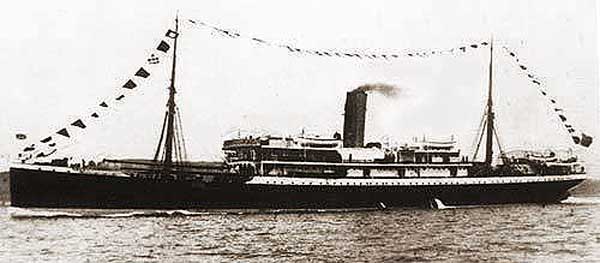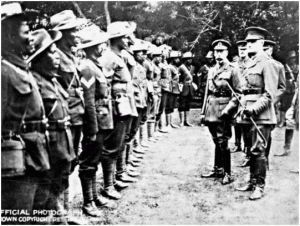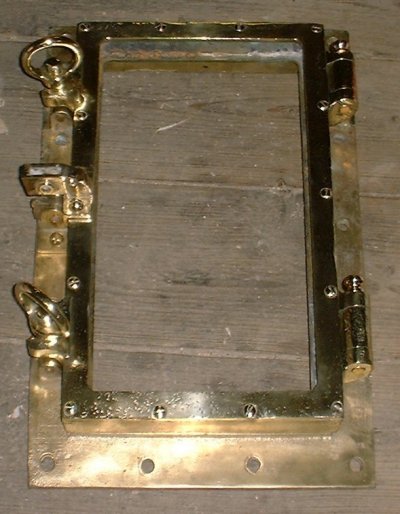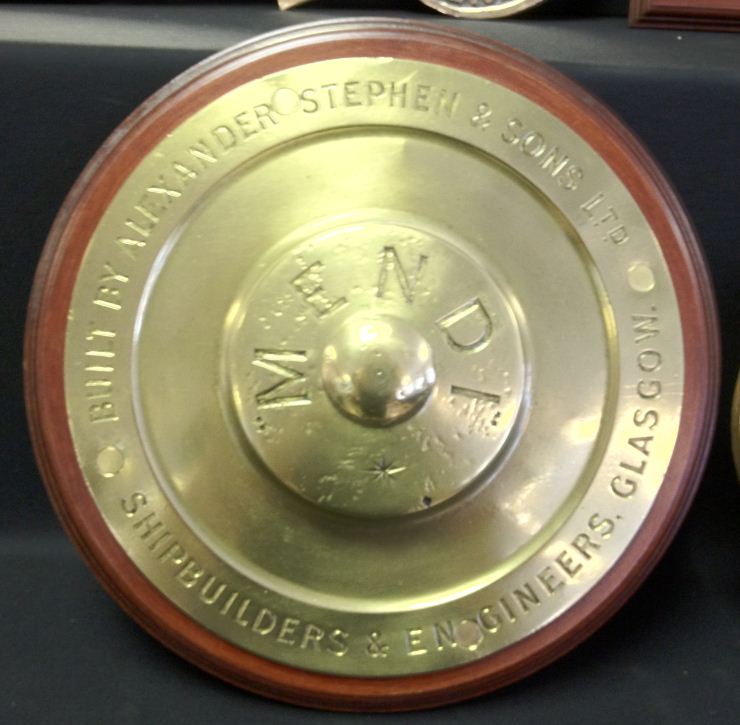SS Mendi 1917
50°27,496'N 01°20,047'W

SS Mendi was a steamship of the Elder Dempster Line, requisitioned by the British government as a troopship in 1916. She sank off the Isle of Wight in 1917 with the loss of 646 lives, mostly from the South African Military. She was built by Alexander Stephen & Sons who also built the Tea Clipper Gossamer lost on the Devon coast in 1868.
On 21 February 1917, during the First World War, Mendi was transporting 823 personnel of the 5th Battalion the South African Native Labour Corps to France. She was en-route from Cape Town to Plymouth via Lagos in Nigeria where a gun was fitted to her stern. then on to Plymouth. She then left Plymouth for Le Have in Northern France. At 5 am, while being escorted by the destroyer HMS Brisk, Mendi was struck amidships and cut almost in half by the SS Darro which was an empty meat ship bound for Argentina.
616 South Africans (607 of them black troops) plus thirty crew members, mostly British, died in the disaster. The troops on the ship were from the South African Labour Corp who had been assembled from mostly the kingdom of Pondo in the Eastern Cape. Very few of the bodies were ever recovered.
For some reason the crew of the Darro made no attempt to rescue survivors, but lifeboats from HMS Brisk helped recover some of the survivors.
The Captain of the Darro, Henry W. Stump was found guilty of “having travelled at a dangerously high speed in thick fog, and of having failed to ensure that his ship emitted the necessary fog sound signals.” and had his licence suspended for one year.

 The following photograph is of the men of the South African Labour Corps being inspected by King George V.: Photograph courtesy of the South African National Museum of Military History. Click the image above to see Susanne’s epitaph
The following photograph is of the men of the South African Labour Corps being inspected by King George V.: Photograph courtesy of the South African National Museum of Military History. Click the image above to see Susanne’s epitaph
Why he never stopped to pick up survivors was never established but some historians believe it may have been for racial reasons. After the War, none of the black servicemen on the Mendi, neither the survivors nor the dead, or any other members of the South African Native Labour Corps, received a British War Medal or a ribbon. Their white officers did. This was South African decision. Black members of the South African Labour Corps from the neighbouring British Protectorates of Basutoland (modern Lesotho), Bechuanaland (Botswana) and Swaziland did receive medals.
The wreck of the SS Mendi was not positively identified until 1974 when divers recovered an engraved brass boss.
The following is a photo of one of the portholes from the wreck. Callum Beveridge who recovered the porthole arranged for it to go to the Museum in South Africa.
Name: | SS Mendi |
Type: | Passenger Ship |
Owner: | Elder Dempster Lines Ltd. – African Steamship Co., Liverpool |
Tonnage: | 4230 |
Dimensions: | 112.8 x 14.1 x 7.1 m |
Builder: | Alexander Stephen and Sons, Glasgow, Scotland, Yard No. 407 |
Engines: | Triple expansion engine, two boilers, single screw. 424 hp 14 knots |
Launched: | 1905 |
History: | Requisitioned in 1916 by the British Government |
Fate: | Sank following a collision with SS Darro in 1917 |
The following is a photo of one of the portholes from the wreck. Callum Beveridge who recovered the porthole arranged for it to go to the Museum in South Africa.

The following is a wheel boss recovered from the wreck by Roger Simon Bowstone Diving

References
- Grundlingh, A, Fighting Their Own War – South African Blacks and the First World War, (Ravan Press, Johannesburg, 1987), pp 139-140.
- Grundlingh, Fighting Their Own War, p 140.
- Grundlingh, Fighting Their Own War, p 140.
- Clothier, N, Black Valour – The South African Native Labour Contingent, 1916-1918 and the Sinking of the Mendi, (University of Natal Press, Pietermaritzburg, 1987), pp 96-8.
- See Clothier, Black Valour, pp 90-1, for the latter view. Grundlingh, Fighting Their Own War, is one of those who questions Stump’s racial attitudes, p 95.
- Grundlingh, Fighting Their Own War, pp 106-107.

